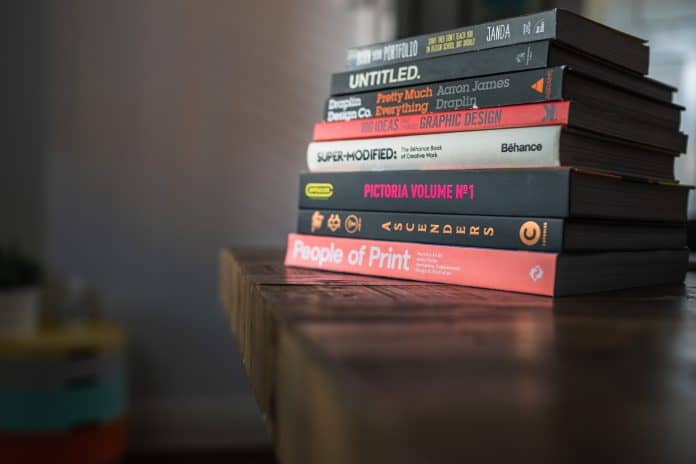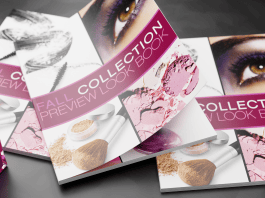Last updated on June 21st, 2024 at 09:57 am
Most lamination appeals to a sense of sight; gloss is extra shine, matte is a dull finish. When comparing matte vs soft touch, both have the same distinctive look. However, it adds extra depth that cannot be reached with other laminations. Soft touch, sometimes referred to as velvet lamination, goes one step further and appeals to a consumer’s sense of touch. The smooth velvet feel and soft touch finish of this lamination instantly creates a luxurious experience for anyone holding your product.
What is Soft Touch Lamination and How Is It Used?
The bi-oriented polypropylene film, or BOPP, is 1.3 mil thickness. This will add additional thickness to the sheet but will not stiffen once lamination is applied. The adhesive is activated by heat, and with most laminates, the sheets need to rest for hours before they can be creased. However, Printivity uses a unique soft touch matte laminate that requires a significantly shorter amount of time for rest. This allows us to continue to meet our quick turnaround times without compromising on quality.

Soft touch lamination is added to one side of the sheet after printing, then cut down to the final dimension. This means that the whole printed sheet is covered by the lamination. Like most single-sided lamination, soft touch can only be applied to coated cardstock paper types. This makes it the ideal choice for booklets, magazines, mini posters, and business cards, as well as marketing materials.

Benefits of Adding Soft Touch Lamination
Soft touch lamination offers more than visual and textual benefits to your print materials. Adding lamination is critical for keeping the marketing materials for your company looking new and professional.
- Additional layer of protection from toner chipping
- Prevents corners curling after extended use
- Fingerprint resistant
- Scratch and scuff resistant
- Noticeable different look and feel from non-laminated paper
- Premium finish
- Rubbery feel – gives more of a grip
Once your marketing materials are given to current and potential customers, marketers hope that they will be continuously looked at and passed around. When products are able to stay clean and new for an extended period, it could mean extending the use of the printed material. Unfortunately, excessive use usually means that the product will get damaged in some way. Adding soft touch lamination to printed materials will reduce the probability of common damages, like toner chipping and corners curling/fraying.
Other frequent issues can occur the first time your marketing material is looked at. Fingerprints are the most apparent with UV Coating or Gloss Lamination. The oils from fingers immediately transfer on the shiny finish and are difficult to remove. The textured matte finish is resistant to fingerprints, which leaves your product looking brand new for a long period of time.
When these materials are circulated, often, they become scratched and scuffed over time. This is an unavoidable problem with normal prints. However, soft touch lamination has scratch and scuff-resistant abilities.
There is competition within every industry and an increased need to stand out. Going the extra mile in the small details can grab customer’s attention. Soft touch lamination will give every printed piece a premium finish that a customer can see and feel. There is an instantly noticeable visual difference between a product that is laminated with soft touch and one that is not. The obvious visual difference will set your marketing materials apart from competitors. But the texture, which is almost rubber-like, is what will make your product worth remembering.
Disadvantages Of Soft Touch
Let’s start out by saying, the benefits of soft touch lamination outweigh the negatives. But it is always good practice to be fully informed about a product before purchasing.
Due to the matte finish of the soft touch, colors will appear duller than originally printed. Sometimes this can be considered a benefit when you want to give more depth to your materials. However, if your print materials are rich in color, the lamination will mute your colors. If you are interested in a finish that will enhance colors, consider gloss lamination. This will give off a high shine and make rich colors “pop.”
As known with most customizations, soft touch lamination is an additional cost. Compared to gloss and matte lamination, soft touch is considered the most luxurious option available. Unfortunately, this means that it will come at a slightly higher price point than the other options. Be sure to factor in soft touch lamination in your budget for your next marketing strategy that needs to make a big impression!
Finishing Touches
Adding soft touch lamination to your print marketing and packaging can help ensure that your product will stay with your client without losing quality. If soft touch lamination does not fit your budget on every project, consider adding it to the most important materials that need to maintain its integrity.
Even in today’s digital market, making your business and its products distinct with effective print marketing is still highly relevant to your overall marketing strategy. Attract customers with the eye-catching matte appearance but keep them interested in your message with the velvet feel of soft touch lamination. If you would like a quote or to feel the for yourself, please contact Printivity at 1-877-649-5463, and we’ll happily share a complimentary paper sample.







